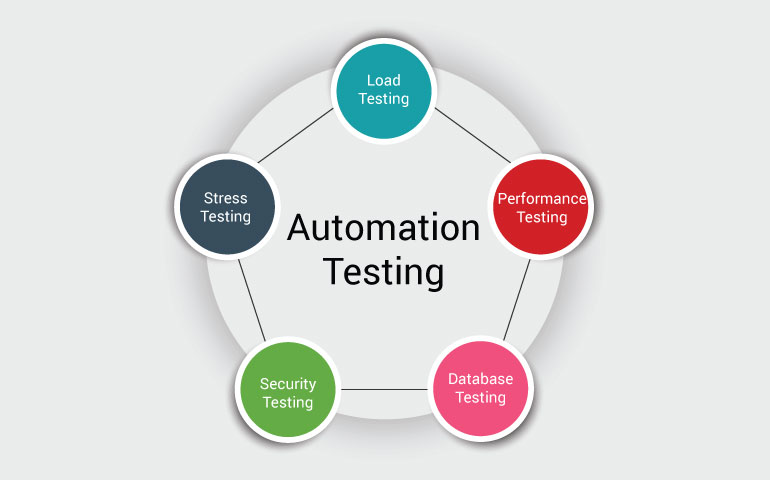Efficient Automation Testing: Enhancing Software Dependability and Rate
Efficient Automation Testing: Enhancing Software Dependability and Rate
Blog Article
From Manual to Automated Testing: A Comprehensive Guide to Transitioning Efficiently and Successfully
In the world of software application testing, the change from manual to automated processes has become an increasingly essential shift for organizations seeking to boost efficiency and precision in their screening practices. As innovation continues to development, the demand for reliable and seamless computerized testing approaches has actually never been much more important. The journey from handbook to automated screening is not without its challenges, however when come close to purposefully and with a clear plan in mind, the advantages can be substantial - automation testing. In this extensive guide, we will discover vital steps and considerations important for an effective shift, from the initial option of tools to the combination of automation into existing workflows. Stay tuned to reveal the insights that will certainly help pave the means for a smoother and much more effective testing process.
Benefits of Automated Evaluating
Automated screening supplies countless advantages, enhancing performance and precision in software growth procedures. One key benefit is the significant reduction in screening time. Automated tests can be run simultaneously on several devices and running systems, substantially quickening the screening phase compared to hand-operated testing. This enhanced efficiency enables faster comments on the quality of the software application, enabling programmers to recognize and address problems quickly.
In addition, automated testing ensures a greater degree of precision in finding defects. Uniformity in testing is additionally boosted, as automated tests implement the same steps exactly each time they are run.
Picking the Right Tools

Firstly, examine your needs and objectives. Understand the scope of your project, the technologies entailed, and the ability of your group. This evaluation will assist you figure out the capabilities and functions you call for in your screening tools.
Secondly, think about the compatibility of the tools with your existing systems and procedures. Seamless integration with your present software program growth lifecycle is important to make certain a smooth transition to automation.
Furthermore, assess the scalability and adaptability of the tools. As your screening requires evolve, the devices need to be able to adjust and fit adjustments successfully.
Lastly, consider the assistance and area around the tools. When implementing automated testing, robust assistance and an active user community can give beneficial resources and aid. By meticulously taking into consideration these aspects, you can choose the right tools that line up with your demands and established the stage for a successful transition to automated testing.
Writing Effective Test Manuscripts

When crafting examination manuscripts, it is necessary to consider the particular requirements of the software being examined and make sure that the manuscripts resolve all vital performances. Descriptive and clear calling conventions for test manuscripts and test cases can improve readability and maintainability. Additionally, integrating mistake handling systems within the test scripts can help in determining and addressing issues immediately.
Additionally, arranging test scripts right into modular elements can improve reusability and scalability, reducing redundancy and enhancing these details effectiveness in examination script upkeep. Normal reviews and updates to examine manuscripts are essential to equal advancing software program demands and performances. By complying with these principles, testers can develop efficient and robust examination manuscripts that add considerably to the success of automated testing processes.
Integrating Automation Into Workflows
Effective assimilation of automation devices into existing operations enhances and enhances processes efficiency within software program development cycles. When incorporating automation right into workflows, it is essential to recognize repeated tasks that can be automated to save time and decrease human mistake. By perfectly integrating automated screening tools like Selenium or Appium right into the software development lifecycle, groups can achieve faster comments on code adjustments, causing quicker bug discovery and resolution. This assimilation enables continual testing throughout the advancement procedure, guaranteeing that any problems are recognized at an early stage, leading to greater software top quality. Additionally, automation can be made use of to cause tests automatically after each code devote, supplying immediate validation and maximizing testers to concentrate on even more facility scenarios. Correct assimilation of automation tools requires partnership in between development, screening, and procedures teams to establish a unified process that optimizes efficiency and performance in delivering top quality software.
Making Sure a Smooth Shift
Successfully transitioning to automated screening includes thorough planning and mindful execution to lessen interruptions and maximize performance in the software development procedure - automation testing. To make sure a smooth transition, it is important to begin by performing a detailed assessment of the existing testing procedures and identifying areas where automation can bring one of the most substantial advantages. Involving with all stakeholders beforehand in the process, consisting of designers, testers, and project managers, is vital for gathering support and buy-in for the automation effort
Communication is key throughout this shift stage. Clear communication of the goals, advantages, and assumptions of automated testing helps to handle any type of resistance or issues that might occur. Additionally, offering sufficient training and sources for staff member to upskill in automation tools and techniques is essential for ensuring a successful transition.

Verdict
In final thought, transitioning from manual visite site to automated screening supplies many advantages, including increased effectiveness and dependability. By selecting the ideal devices, writing effective test scripts, and incorporating automation effortlessly right into process, organizations can ensure a successful and smooth shift. It is important to welcome automation as a useful asset in software application testing procedures to boost overall top quality and efficiency.
In the realm of software program testing, the change from handbook to automated procedures has come to be a progressively essential shift for organizations seeking to enhance performance and accuracy in their screening practices. Automated examinations can be run all at once on several tools and running systems, significantly speeding up the screening phase contrasted to hand-operated screening. Consistency in testing is also improved, as automated tests implement the very same actions precisely each time they are run.To ensure the successful application of chosen testing tools, the creation of reliable examination scripts plays a vital duty in verifying the performance and performance of automated processes - automation testing. By adhering to these principles, testers can develop reliable and robust examination scripts that add substantially to the success of automated screening procedures
Report this page